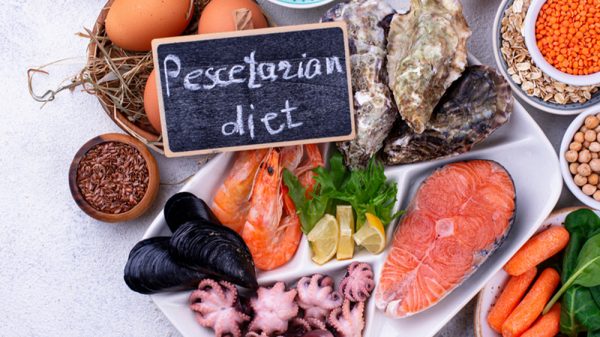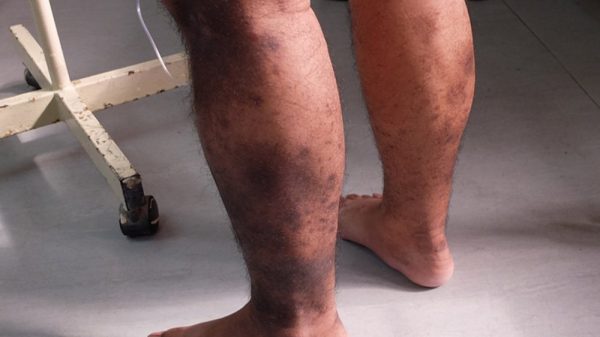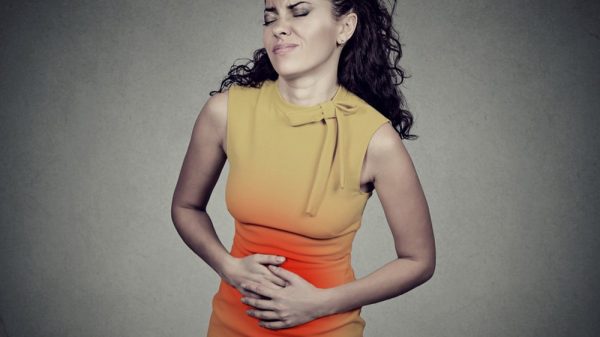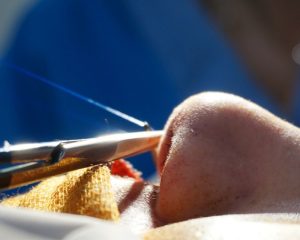Lipedema is a painful and bothersome condition that causes excess fat buildup in the legs. If you think that you are simply prone to gaining weight in your legs, you may feel discouraged when weight loss tactics don’t necessarily result in a resolution of your symptoms. You may actually have a condition called lipedema, which requires more in-depth and multifactorial treatment methods.
Read on to find out more about lipedema and what to eat and what to avoid on the lipedema diet.
What Is Lipedema?
Before we dive into the components of an effective lipedema diet, let’s take a look at what lipedema is.
Lipedema – also called lipoedema – is a chronic condition that is described as a fat disorder. It is characterized by the abnormal accumulation of fat cells or adipose tissue buildup in the legs. Despite sometimes being called a rare adipose disorder (RAD), lipedema is in fact not rare at all. Lipedema occurs mostly among females, with an estimated 11% of American women living with the condition. (1)
The lipedema causes are largely unknown, though it is hypothesized that genetics may play a role in fat metabolism and accumulation patterns. Because the condition occurs overwhelmingly among women and not men, it is also thought that hormones play a role.
The condition is often confused with weight gain or obesity because of its presentation. Though lipedema and obesity may in some cases occur simultaneously, they are two separate conditions.
How Is Lipedema Different from Normal Weight Gain?
Lipedema fat is distinctly different from normal fat because of how it accumulates and how it affects the body. Women affected by lipedema often have an average-sized or slender upper half of the body, with the lower half being significantly larger and more swollen. These disproportionate body halves often impact quality of life and make it difficult for women with lipedema to find clothing that fits comfortably.
How is lipedema different than obesity or weight gain? Normal weight gain usually results in fat deposits throughout the body. In contrast, lipedema does not follow a normal pattern of fat accumulation and instead leads to fat accumulation primarily in the legs. A healthy diet is usually a straightforward resolution to obesity, while lipedema requires more complex treatment.
Plus, lipedema is often confounded by other conditions such as chronic venous insufficiency and lymphedema. Finally, a key characteristic of lipedema fat accumulation is pain and easy bruising, while simple weight gain does not result in pain. In many ways, lipedema is more similar to conditions like Dercum disease, which results in the formation of painful fatty lipomas in the legs.
In some cases, a woman with lipedema may also be overweight, which can make it especially frustrating when changing your way of eating and exercising do not yield any results.
Symptoms of Lipedema
Do you think you might have lipedema? Here are a few of the telltale signs and symptoms:
- Disproportionate size between the lower and upper halves of the body
- Legs that have the appearance of swelling
- Swelling of the lower legs that abruptly stops at the ankles or feet
- Easy bruising in the legs
- Cellulite or dimpled appearance in the legs
- Development of hard fat nodules in the legs
- Varicose veins
The Lipedema Diet
Dietary changes will not cure lipedema, but they can help slow the deposit of fat cells into the legs. The lipedema diet, combined with other treatment methods is often effective. Many of the known dietary guidelines for managing lipedema have been devised by Dr. Karen Herbst, Ph.D., M.D., who is an expert in lymphatic diseases and devised the RAD diet. (2)
Foods to Eat
If you have lipedema, it’s helpful to incorporate certain foods into your diet.
1. Fruits and Vegetables
Fruits and vegetables are among the most important foods to eat if you are aiming to lower the level of systemic inflammation in the body. Fruits and vegetables are packed with micronutrients such as vitamins, minerals, and antioxidants that neutralize damaging free radicals and help all cellular processes operate as efficiently and smoothly as possible.
There are no fruits or vegetables that are off-limits when you have lipedema. Fill your diet with a rich variety of fresh produce such as kale, spinach, arugula, peppers, sweet potatoes, berries, and citrus fruits.
2. Nuts and Seeds
Nuts and seeds are rich in healthy fats like the plant form of omega-3 fatty acids and other polyunsaturated fats. In addition to healthy fats, nuts and seeds also contain crucial dietary minerals and antioxidants. Incorporate nuts like pistachios, pecans, walnuts, and almonds into your diet to help combat lipedema.
3. Protein
Protein is a crucial part of the lipedema diet because the essential amino acids in protein support the healthy formation of connective tissue and muscle throughout the body, including the legs. Getting balanced ratios of essential amino acids in your diet on a daily basis is also crucial for supporting healthy metabolic processes.
Egg whites are an excellent source of protein for individuals living with lipedema. Eggs are packed with optimal ratios of essential amino acids, and also contain other important nutrients such as vitamin D. The most nutritious part of the egg for individuals with lipedema is the egg white because it contains lower levels of saturated fat.
You can also get optimal ratios of essential amino acids from protein if you follow a plant-based diet. You can get all the protein you need from eating a variety of vegetable proteins each day, including whole grains, nuts, seeds, and beans. Soy products are also a high-quality source of vegetable protein. However, some individuals with lipedema find that eating lots of soy-based products exacerbates their symptoms.
4. Whole Grains
Whole grains include grains that have not been processed or have been only minimally processed. Whole grains include products like brown rice, quinoa, and oats and are packed with fiber. Consuming lots of fiber is linked to a healthier metabolism and a better balance of good bacteria in the gut.
5. Cutting Down on Carbohydrates
For some women, following a ketogenic diet may help control lipedema. If you find that your body is sensitive to the consumption of carbs, whether they are complex or simple carbs, it might be in your best interest to consider a low-carb diet. An ultra low carb, high-fat diet is referred to as a ketogenic or keto diet. When carbohydrates are restricted, you must consume more of the other macronutrients, which are protein and fat, to make up for the calories that you would be consuming in the form of carbohydrates.
Keep in mind that the ketogenic diet does not work for everyone with lipedema. However, if you find that you are generally sensitive to carbohydrates, it may be worth giving the ketogenic diet a try. You can always do a modified form of the formal keto diet and simply reduce your carbohydrate intake to a lower level, instead of following the ultra low carb or zero carb diet. Finally, it’s important to note that fruits and vegetables are considered to be complex carbohydrates. Even if you were following a ketogenic diet, it’s important to still eat a variety of fruits and veggies, since they are potent anti-inflammatory and antioxidant agents.
6. Oily Fish
Oily fish is an excellent source of omega-3 fatty acids, which are potent anti-inflammatory compounds that may help improve metabolic function as well as manage related conditions like fatty liver disease and type 2 diabetes. Incorporating plenty of omega-3 fatty acids into your diet may encourage a healthy pattern of fat cell deposition.
Fatty fish are rich in EPA and DHA, which are the forms of omega-3 fatty acids that are only found in fish and not in other healthy fat sources such as nuts and seeds. You can get plenty of omega-3 fatty acids from fish such as mackerel, salmon, arctic char, sardines, and anchovies.
7. Beans
Beans are an important source of protein and fiber when you have lipedema. Try adding beans such as chickpeas, lentils, black beans, and kidney beans into your diet. Beans work great in soups and stews or as a meat substitute in your favorite dishes.
8. Foods That Are Easy to Digest
Soups and smoothies allow the digestive system to rest. The more we use the cells in our digestive system, the more wear-and-tear is placed on our cells, contributing to oxidative stress and inflammation. Give your digestive system a break by eating easily digested foods such as low-sodium soups and smoothies. It’s also important to make sure that your smoothies don’t contain too much sugar, and that they contain some protein to give you a balance of macronutrients.
It may even be beneficial to do short spurts of fasting, though it’s always a good idea to check with your healthcare provider before fasting or making any other changes that may impact your health.
8. Organic Foods
When possible, aim to consume organic foods over non-organic foods, especially when it comes to fruits and veggies. The pesticides present in non-organic produce may increase the levels of oxidative stress in the body and impact the processes that contribute to fat accumulation.
Since organic foods are generally more expensive, stick to purchasing organic for the foods that are associated with the highest intake of pesticides. Foods with edible peel or no peel are correlated with the ingestion of more pesticides. For example, stick to organic berries, apples, peaches, and spinach. Non-organic bananas, avocados, and melons can be safely eaten.
Foods to Avoid
Certain foods are linked to inflammation and may exacerbate the fat accumulation pattern that is characteristic of lipedema.
1. Dairy Products
Dairy products like cheese and milk may contribute to an imbalance in the gut microbiome that contributes to increased levels of inflammation. Avoid or limit most dairy products, including whole milk, cream, butter, and cheese.
The one exception to this is low-fat, low-sugar yogurt which contains probiotics that support a balanced microbiome. However, you can also get plenty of probiotics from foods like sauerkraut and kimchi. A high intake of fiber also supports a healthy microbiome, since gut bacteria feed on fiber and produce anti-inflammatory compounds.
2. Meat
Meat is a significant source of saturated fat in the typical American diet. Saturated fat is connected to metabolic dysfunction as well as cardiovascular disease. On top of that, digesting the compounds in processed and meat is also linked to an inflammatory response in the body that may cause the abnormal buildup of fat cells characteristic of lipedema.
Avoid meat products like such as ground beef, steak, bacon, and preserved deli meats.
3. Added Sugars
Though moderate intake of natural sweeteners is acceptable, it is overall advisable to avoid added sugars in general. Foods that contain added sugars have a high glycemic index, which means that the body rapidly converts them into glucose, which spikes blood sugar. Consuming too many food products with a high glycemic index can increase the level of systemic inflammation throughout the body, which may contribute to the abnormal accumulation of fat cells that is characteristic of lipedema.
Plus, the chronic consumption of high glycemic foods increases the risk of developing metabolic conditions such as insulin resistance, type 2 diabetes, and fatty liver disease. To avoid foods with added sugars, stay away from foods like cookies, cakes, candy, soda, sugary breakfast cereals, and packaged food items.
4. Refined Grains
The body handles refined grains in the same way that it handles added sugars. This is because refined grains or whole grains have been heavily processed to remove all nutritious parts of the grain, including protein, fiber, and micronutrients. The simple carbohydrates present and refined grain products are rapidly broken down in our digestive systems and converted into glucose molecules that quickly spike blood sugar levels. High blood sugar leads to systemic inflammation, which can worsen lipedema and associated symptoms.
To keep inflammation low and to promote healthy metabolic functioning, avoid eating refined grains. You can limit the amount of refined grain in your diet by cutting out foods like white bread, white rice, crackers, granola bars, boxed breakfast cereals, and pastries.
5. Salt
Eating too much sodium is a culprit for swelling and excess water retention, which can worsen symptoms associated with lipedema. For example, when we eat a salt heavy meal, the body must hold on to excess fluid in order to ensure that the sodium concentration in the body doesn’t get too high. This can be very uncomfortable for individuals with lipedema, lymphedema, or lipo-lymphedema by worsening both swelling and inflammation.
Moreover, chronically high salt intake can lead to high blood pressure, which increases the risk of developing heart disease.
6. Processed Foods
Limiting or eliminating processed foods is a vital component of the lipedema diet. Processed foods are filled with inflammatory compounds such as preservatives and artificial sweeteners that may influence the processes that cause abnormal fat accumulation throughout the body. Chemical additives to foods can irritate cells and impede the functioning of normal processes in cells and organs. Consuming too many chemical additives can cause oxidative stress, which is the buildup of waste products called free radicals that react with bodily tissues and cause damage. Neutralizing these free radicals is a key reason for eating plenty of plant-based foods like fruits, veggies, whole grains, nuts, seeds, and beans. However, reducing the formation of free radicals in the first place by reducing your intake of processed foods is also very effective.
On top of the chemicals commonly added included in these foods, processed foods also tend to be high in all of the other foods that are bad for lipedema such as saturated fat, salt, and added sugars.
7. Gluten
Gluten is a type of protein that is present primarily in wheat products, though it can also be present in trace amounts in other food products due to processing and packaging overlapping at the same factory. Avoiding gluten won’t be helpful for managing all cases of lipedema. However, if you have a sensitivity to gluten, sticking to gluten-free foods can help lower inflammation and help reduce the accumulation of excess fat cells in the legs.
Other Tips for Managing Lipedema
As mentioned above, diet alone will not solve lipedema because the condition is distinctly different than obesity. The lipedema diet should be followed in conjunction with other lipedema treatment methods. Here are a few options for getting comprehensive lipedema treatment.
1. Find a Doctor Who Treats Lipedema
If you have lipedema, you may be wondering what type of doctor treats lipedema. It’s important to find a doctor who is familiar with and specializes in lipedema, so it is worth doing some research before making an appointment. Some doctors tend to be quick to pass off lipedema as simple weight gain or obesity.
Physicians with the most experience treating lipedema tend to be endocrinologists and rheumatologists, who are specialized in conditions affecting the immune system. However, many different kinds of doctors may play a role in treating lipedema such as internists, general surgeons, or plastic surgeons.
2. Lymphedema Management Techniques
When lipedema progresses, it may become lipo-lymphedema which essentially describes the presence of both lipedema and lymphedema. In this case, strategies for treating lymphedema may be helpful for managing symptoms of lipedema as well. Here are a few techniques for managing lymphedema that is concurrent with lipedema:
- Compression garments: Compression garments such as compression stockings or compression bandages are tight clothing that prevents the buildup of lymph fluid and blood in the extremities. Regularly wearing compression garments can help resolve symptoms related to lipo lymphedema.
- Manual lymphatic drainage: Manual lymphatic drainage is a key component of decongestive therapy that encourages the flow of lymph fluid back towards the heart. In turn, this helps to reduce fluid buildup and swelling in the extremities. Manual lymph drainage must be performed by a certified lymphedema therapist.
- Physical therapy and lymphedema exercises: Certain maneuvers and exercises are helpful for encouraging the healthy circulation of lymph fluid throughout the body. A physical therapist can help you incorporate certain movements into your daily routine that help prevent excess swelling.
3. Surgical Procedures
In some cases, surgical interventions for lipedema treatment may be effective. It’s a good idea to find a plastic surgeon who is familiar with treating conditions like lipedema and lymphedema. Liposuction may be very helpful for removing excess fat cells while also protecting the lymphatic system from the stress that may contribute to lymphedema.
4. Find Dietary Strategies That Work for You
Not all women will respond the exact same way to certain dietary changes. For example, while a ketogenic diet may help some women, other women may respond better to a vegan diet. The key is to experiment with dietary strategies to see if certain foods either improve or worsen your lipedema. A good way to keep track of your diet and symptoms is to record the foods you eat in a journal, as well as your symptoms. You will likely notice a pattern over time and may be able to pinpoint foods that are helpful and foods that are best avoided for your specific case of lipedema.
5. Weight Loss
Though “fat-burning” strategies, dieting, and other weight loss techniques are not sufficient for managing lipedema, weight loss may be helpful if you are overweight. Watching your calorie intake and creating a calorie deficit can help you ensure that the energy you spend is greater than the energy you consume. Reaching a healthy weight can be effective for sustaining a healthy metabolism, and making sure that your case of lipedema is not complicated or confounded by metabolic disorders that accompany obesity. Achieving a healthy weight can simply make it easier to target lipedema and distinguish the fat tissue that is connected to lipedema from the fat tissue that is a result of being overweight.
6. Exercise
Though exercise alone won’t get rid of lipedema fat, increasing your activity levels can help decrease the severity of your symptoms while increasing your muscle mass. Exercising also helps decrease swelling that is associated with lymphedema.
7. Joining a Support Group
Because lipedema is often misdiagnosed, lipedema patients often feel alone and isolated. Connecting with others who live with the same condition can help provide comfort. It can be very helpful to learn about other’s experiences, including their symptoms, medical treatments, and what strategies have worked and not worked for them. Not only does being a part of a support group alleviate emotional distress but it can also connect you with valuable resources and physicians who specialize in treating lipedema.
Conclusion
Lipedema is a life-altering condition that can cause immense discomfort, insecurity, and confusion. It’s important to know that lipedema is a common condition and you are not alone! Certain dietary changes may help manage lipedema and it’s crucial to eat a diet high in fruits, veggies, protein, and whole grains. Keep in mind that different individuals respond to different dietary changes, so it’s important to track your food intake to see if there’s a correlation between certain foods and exacerbation of symptoms. In addition to diet, however, other treatment methods are also very important for managing lipedema, such as exercise, lymphedema therapy, and potentially surgery. Having lipedema is challenging, but with the right treatment and support, lipedema and its symptoms can be managed to increase your quality of life.
[infographic]What is Lipedema? It is a painful and bothersome chronic condition that is described as a fat disorder. Lipedema occurs mostly among females, with an estimated 11% of American women living with the condition.
Symptoms
- Disproportionate size between the lower and upper halves of the body
- Legs that have a swelling appearance
- Swelling of the lower legs that abruptly stops at the ankles or feet
- Easy bruising in the legs
- Cellulite or dimpled appearance in the legs
- Development of hard fat nodules in the legs
- Varicose veins
The Lipedema Diet
Foods to Eat
- Fruits and Vegetables
- Nuts and Seeds
- Protein
- Whole Grains
- Cutting Down on Carbohydrates
- Oily Fish
- Beans
- Foods That Are Easy to Digest
- Organic Foods
Foods to Avoid
- Dairy Products
- Meat
- Added Sugars
- Refined Grains
- Salt
- Processed Foods
- Gluten
References:























